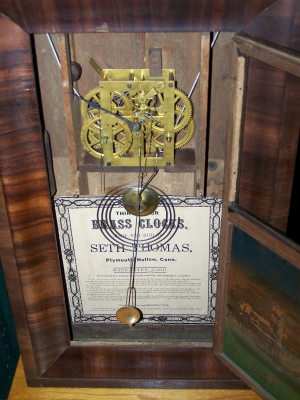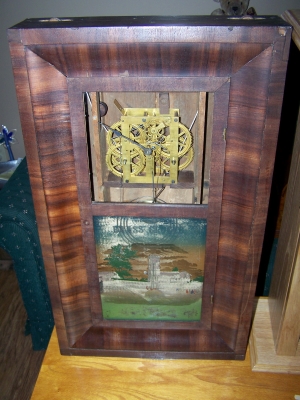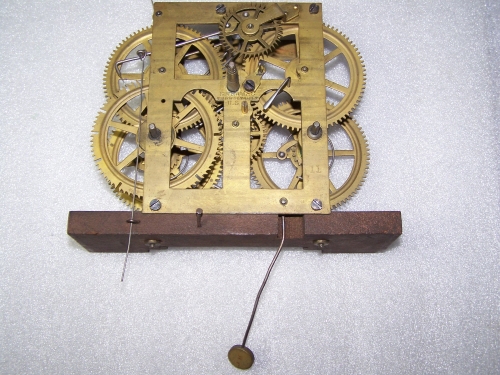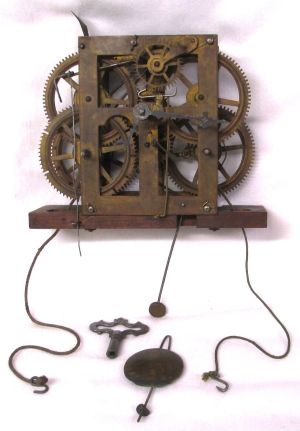



What's New 3
| Restoration # 17 Seth Thomas--November 2023
This is a Seth Thomas movement. It is a weight driven movement with NO mainsprings. The movement is a time and strike, which counts out the full hours on a gong. The movement was purchased from a dealer in West Virginia. To my knowledge there were no model names or numbers as there are today. This would have been called a mantle clock (probably a pillar or ogee style). The case would have been probably pine as this was a utilitarin, not a show type clock. The clock was made prior to 1865, as it is labeled Plymouth, CT. and the name was changed to Thomaston, CT in 1865. My guess would be 1850 to 1860. The movement is an earlier type as the plates are held together with pins. Later movements have black steel screws. When I received the movement it was very dirty and rusted on the steel parts. I fully disassembled and cleaned the movement, polished all the pivots, and replaced 14 bushings.The movement has been worked on in the past and several pivot holes staked (not very well). I am setting it up on a test stand to determine the how heavy the 2 weights should be and pendulum leader length. I believe the original pendelum and key are with the clock. Be sure to remove the pendulum before moving the clock, and it MUST BE LEVEL AND PLUMB. Enjoy Spencer Smith Hampden, ME |
Restoration # 18 Seth Thomas--December 2023 This is a Seth Thomas movement. It is a weight driven movement with NO mainsprings. The movement is a time and strike, which counts out the full hours on a gong. The movement was purchased from a dealer in Florida. To my knowledge there were no model names or numbers as there are today. This would have been called a mantle clock (probably a pillar or ogee style). The case would have been probably pine secondary wood and mahogony on the front and most visible areas. The clock was made prior to 1870, as it is labeled Plymouth, CT. and the name was changed to Thomaston, CT in 1865. My guess would be 1865 to 1870. I do know it is a bit later as the plates have screws to hold them together. The dial type dates it to 1892 - 1893. It may be original or not? When I received the movement it was very dirty and rusted on the steel parts. I fully disassembled and cleaned the movement, polished all the pivots, and replaced 2 bushings.The movement has been worked on in the past and several pivot holes staked (not very well). I set it up on a test stand to determine the how heavy the 2 weights should be and pendulum leader length. I have found an old case from a dealer in Wisconsin, that originally had a clock in it from a store in nearby Racine, and this clock movement fits exactly in that case. This case was made from 1842 to 1913. NEVER move the minute hand backwards on this movement. (Instructions on inside label) Be sure to remove the pendulum before moving the clock, and it MUST BE LEVEL AND PLUMB. Enjoy, Spencer Smith Hampden, ME |
 |
 |
 |
 |
| Movement Running | Movement Installed | After Cleaning | Before Cleaning |